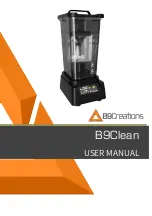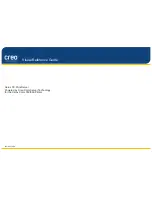
Bar code (BCOCA)
Introduction
The Canon imagePRESS C7010VPS series support the X’4E’ – Colour Specification triplet,
attached to the Bar Code Data Descriptor SDF. With this triplet any of the five AFP colour spaces,
RGB, CMYK, LAB, OCA or HLC can be used to specify the colour of a bar code. If a Colour
Specification triplet is present, it will override any OCA colour definition in the BSD field. The user
must make sure that the colour of the bar code is suitable for the bar code readers. The printer
will not block any unsuitable colours.
Human Readable Interpretation
The printer resident default font for the bar code Human Readable Interpretation (HRI) is an OCR-
A or OCR-B font. The following bar codes use the printer resident OCR-A default font:
• 3-of-9 Code
• Code 128 / EAN 128
• MSI, Industrial 2-of-5
• Matrix 2-of-5
• Interleaved 2-of-5
• Codabar
• Australian Postal Bar Code
• USPS Intelligent Mail
The OCR-A font may be replaced through another suitable font. The user must then make sure
that the character size, the code page and the characters in the new font fit the bar code.
The following bar codes can only use the printer resident OCR-B default font:
• UPC-A
• UPC-E
• UPC-2 supplemental
• UPC-5 supplemental
• EAN-8
• EAN-13
• EAN-2 supplemental
• EAN-5 supplemental
The following bar codes do not have an HRI:
• Postnet
• Planet
• RM4SCC
• Dutch KIX
• Japan Postal Code
• Data Matrix
• PDF 417
• Maxicode
• QR Code
PPFA: Another font than the default OCR-A can be defined through the HRIFONT sub command in
the FIELD command, see the IBM PPFA User’s Guide.
HRI font size: FC versions < B11 have default OCR A and B fonts with a fixed size, 12 pitch – 10
points. The HRI characters may therefore be too large for a very small bar code, or too small for a
very large bar code symbol. Versions ≥ B11 use variable size outline fonts, where the size of the
HRI line is adapted to fit the size of the bar code symbol.
Bar code (BCOCA)
332
Chapter 14 - SRA IPDS
imagePRESS C7010VPS series v2.2
Summary of Contents for imagePRESS C7010VPS series
Page 8: ...Contents 8 imagePRESS C7010VPS series v2 2...
Page 9: ...Chapter 1 Introduction...
Page 14: ...Supported media 14 Chapter 1 Introduction imagePRESS C7010VPS series v2 2...
Page 15: ...Chapter 2 PRISMAsync...
Page 29: ...Chapter 3 The LPD connection...
Page 45: ...Chapter 4 The socket connection...
Page 51: ...Chapter 5 Adobe PostScript 3...
Page 64: ...Bind 64 Chapter 5 Adobe PostScript 3 imagePRESS C7010VPS series v2 2...
Page 86: ...Staple 86 Chapter 5 Adobe PostScript 3 imagePRESS C7010VPS series v2 2...
Page 89: ...Trim Chapter 5 Adobe PostScript 3 89 imagePRESS C7010VPS series v2 2...
Page 99: ...Chapter 6 PDF...
Page 117: ...Chapter 7 Colour management...
Page 133: ...Chapter 8 Accounting...
Page 150: ...Implementation aspects 150 Chapter 8 Accounting imagePRESS C7010VPS series v2 2...
Page 151: ...Chapter 9 SNMP...
Page 159: ...Example in pseudo code Chapter 9 SNMP 159 imagePRESS C7010VPS series v2 2...
Page 222: ...ppmPortGroup 222 Chapter 9 SNMP imagePRESS C7010VPS series v2 2...
Page 223: ...Chapter 10 JDF interface specification...
Page 291: ...Basic JDF ticket Chapter 10 JDF interface specification 291 imagePRESS C7010VPS series v2 2...
Page 297: ...Chapter 11 SMB printing...
Page 303: ...Chapter 12 Hot folder printing...
Page 306: ...Hot folder 306 Chapter 12 Hot folder printing imagePRESS C7010VPS series v2 2...
Page 307: ...Chapter 13 Scan to file and scan to email...
Page 313: ...Chapter 14 SRA IPDS...
Page 361: ......
















































